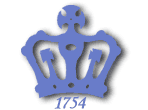|
|
 |
 |
 |
 |
|
LETTERS TO THE EDITORSeeing the LightProfessor Wm. Theodore de Bary ’41’s superb article regarding the history and evolution of Asian Humanities [January 2004] struck a responsive chord. De Bary’s prescient and intuitive intellect gave this pre-med alum the superb opportunity to participate in a two-year major, known in the early and mid-’60s as Oriental Civilization. As a pre-med, my first two years were fully occupied with the usual deadly science requirements, as well as with the Core Curriculum. I realized then that I would never have the option to be exposed to this great culture that flourished well before Western civilization. It seemed to me that when we were muddling about in the Dark Ages, the Orient had the cognitive ability to see the light. I thank de Bary and his colleagues for that educational enlightenment. Laurance J. Guido ’65, ’69 P&S Moore ControversyCiting the information offered by Leo Wong ’68 [March 2004] questioning Clement C. Moore’s authorship of “A Visit From St. Nicholas,” “good scholars and readers of up-to-date reference works” may not agree with Mr. Wong’s reliance on the research of Professor Don Foster of Vassar, who attributes the poem to Henry Livingston. The reliability of Professor Foster’s conclusions are open to serious questions (www.americagallery.com/controversy.shtml and www.jameson245.com/foster_page.htm). Although Henry Livingston penned a number of lighthearted poems, there is no direct evidence that “A Visit From St. Nicholas” was one of them. Until additional evidence is forthcoming, the authorship of Clement C. Moore would appear to remain intact. Seymour M. Gluck ’47 Mystery CrewOn November 6, 1948, I rowed in the Columbia lightweight varsity shell against the Dartmouth heavyweight crew on the Connecticut River at Hanover, N.H. On November 8, the student newspaper, The Dartmouth, related that the Dartmouth crew won by somewhat over a length and gave the boating of the Dartmouth crew but not of the Columbia crew. I have asked the Columbia Athletics Department, but apparently there is no record of the boating. If there are any other survivors of the “mystery crew,” will you please let me know? You can e-mail me at alt30@columbia.edu. Arthur L. Thomas ’50 Praise for St. Paul’sOn January 14, I attended a program of music at Columbia by Nicholas Gombert (1495–1560) and Thomas Crecquillon (1505–1557), performed by the Vox Vocal Ensemble, directed by Peter Phillips. The program was superb; the singing and conduction extraordinary. But just as important, if not more so, was where the works were performed: St. Paul’s Chapel, which is for me the most beautiful and architecturally significant building on campus. It was among the first buildings in New York to be landmarked by the New York City Landmarks Preservation Commission. Some of the circumstances relating to its construction bear telling. In 1903, Olivia Egleston Phelps Stokes and her sister, Caroline, offered Columbia the then-considerable sum of $200,000 for the construction of the new chapel — with the proviso that their nephew, I.N. Phelps Stokes, a graduate of the Columbia School of Architecture and the Beaux Arts in Paris, design the building. The trustees and President Nicholas Murray Butler were in a quandary. The prospect of a chapel with the concomitant money to pay for its construction was welcome news indeed. But this would be the young architect’s first important commission — and his design would be measured against the work of Charles Follen McKim, dean of American architects, designer of the grand plan for the University and its official architect. In the brilliance of his diplomacy in dealing with McKim, the trustees and the imperious Butler but more importantly in his design for the chapel, the young Phelps Stokes showed himself to be worthy of Isaac Newton, his illustrious namesake. He even managed to secure more money from his aunts so that his building would be of quality construction throughout. Listing the architectural details of the chapel is not the purpose of this letter, only details relating to what I could observe tightly wedged as I was between my warmly clad neighbors. The cruciform design of the chapel, the interlocking domes, the elaborate design of the harmoniously colored brickwork — all resulted in not only outstanding design but also in probably the best acoustics in New York City. The performance took place on what may have been the coldest night of the year. Despite the weather, the chapel was packed, a tribute not only to the quality of the performance but to the stamina of members of the Columbia community and to their awareness and appreciation of the University’s cultural offerings. Nis Petersen ’51 John Jay AwardsI notice a conspicuous absence of artists and writers among the recipients of the John Jay Awards. As a poet, I resent your narrow definition of “distinguished professional achievement,” which (except in the case of Stephanie Falcone Bernik ’89) seems to have more to do with financial success than anything else. This narrow definition seems to contradict the values we were taught in such mind-expanding courses as Literature Humanities and Contemporary Civilization. Jeffrey Harrison ’80
|
|
||||||||||||||||||||||||||||||||||||||||||||||||||||||||